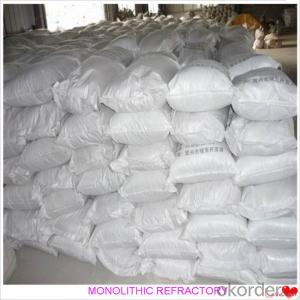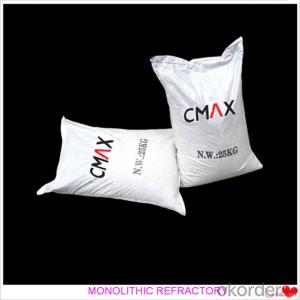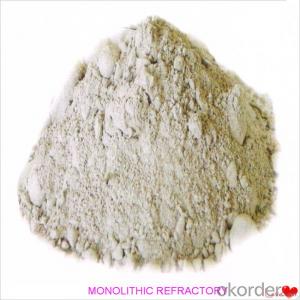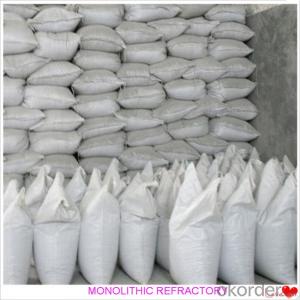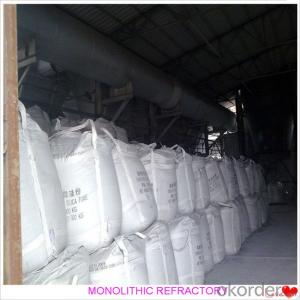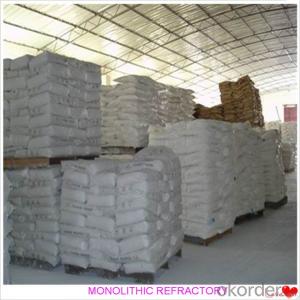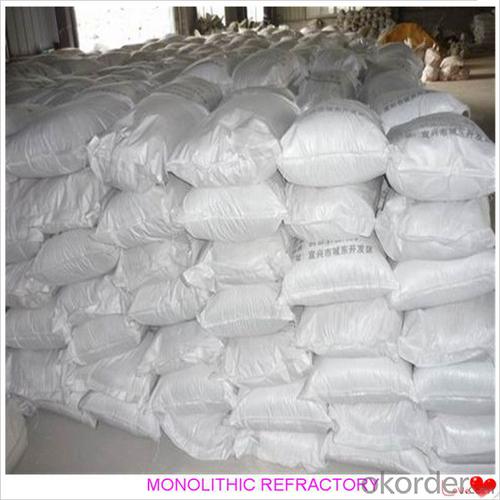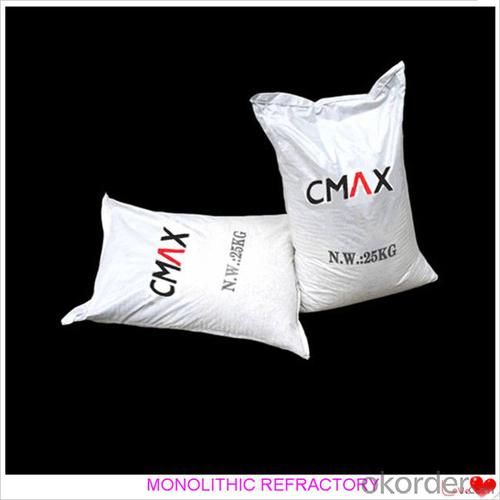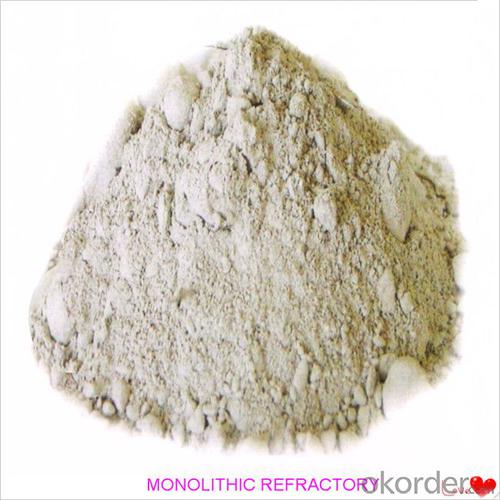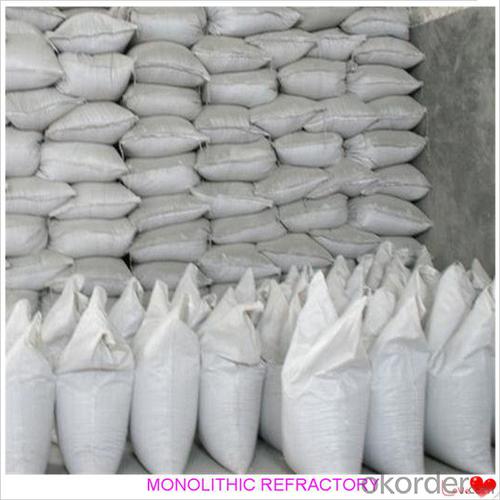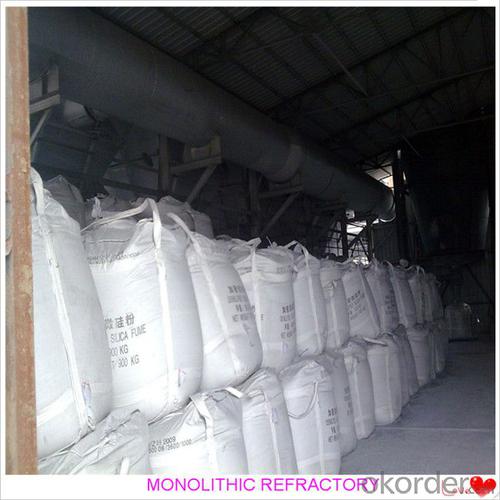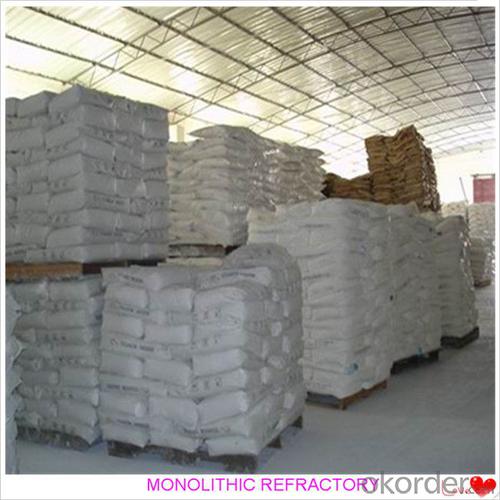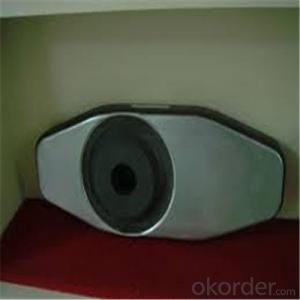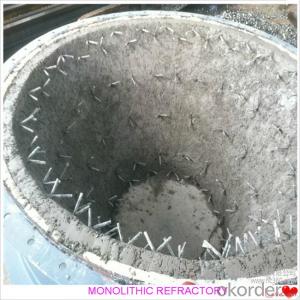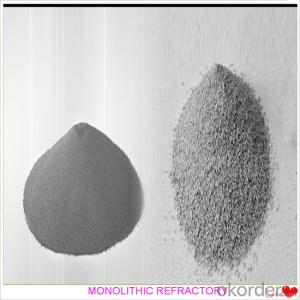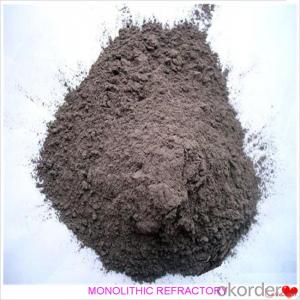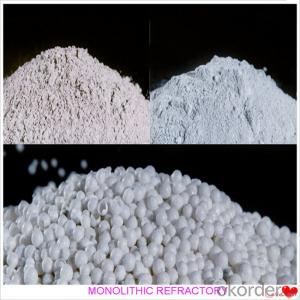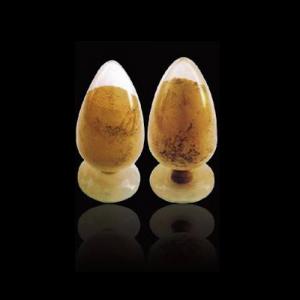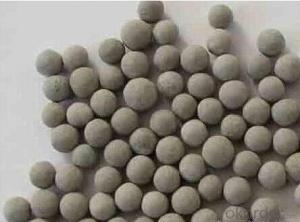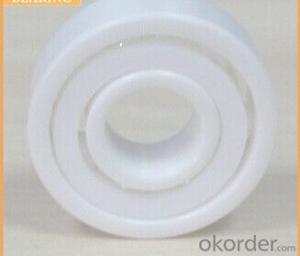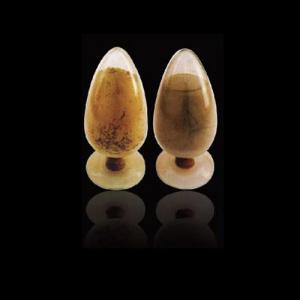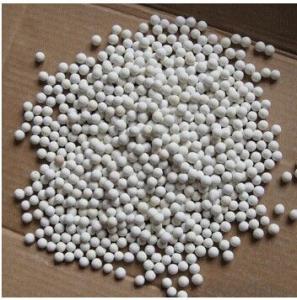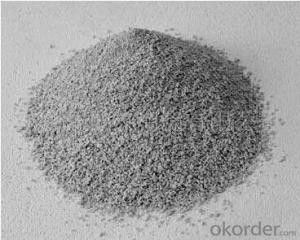Monolithic Refractories for Iron and Steel Industry - Insulating Castable for Fireside and Industrial Furnace
- Loading Port:
- China main port
- Payment Terms:
- TT OR LC
- Min Order Qty:
- 1000 kg
- Supply Capability:
- 3000000 kg/month
OKorder Service Pledge
OKorder Financial Service
You Might Also Like
Insulating Castable For Fireplace and Industrial Furnace in Iron and Steel
Product Description:
Insulating castable is manufactured according to international standards. The product is famous for its excellent abrasion resistance and low thermal conductivity. Further, these can be provided in different specifications as required by the clients. The Insulating castables are used high purity raw materials and additives as the main material, and made of under superfine powder adding technology.
Product Advantages:
The material has excellent structural stability and air tightness, and has high physical and chemical properties, also has a fine working ability.They should be used with the same material products.
Product Applications:
For feature of Insulating castable, they have excellent abrasion resistance, thermal shock resistance, high-temperature resistance, anti-corrode and have high intensity.
Designed for refractory lining of blast furnace iron and slag runners, skimmers and soon
They can be used in troughs of small and mid size BFs and in all positions of the troughs where fast tapping is required.
Product Specifications:
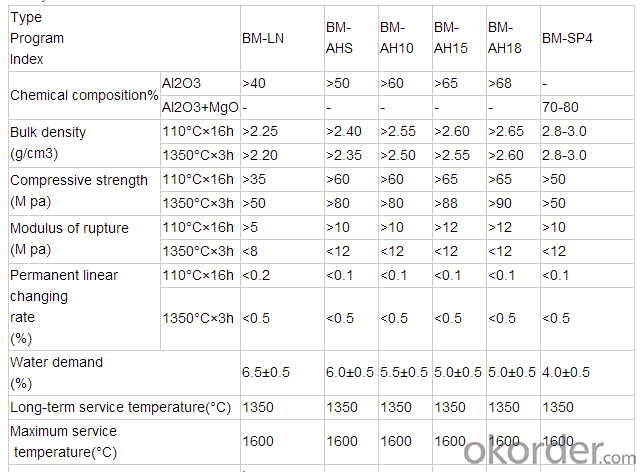
FAQ:
1. How you can control your quality?
For each production processing, we have complete QC system for the chemical composition
and Physical properties. After production, all the goods will be tested, and the quality certificate
will be shipped along with goods.
2. What's your delivery time?
It usually needs about 20days- 45 days after receiving the deposit.
3. Do you provide free samples?
Yes, we can provide a free sample for testing, If we have sample in stock,
The quantity based on the material type, The buyer should bear all the shipping costs.
4. What's your payment terms?
We can accept 30% deposit, 70% balance before shipment for ordrs over $ 2000.
5. Can we visit your Company?
Yes, certainly. You are very welcome to China and we will be honored to have a customer and friend.
Product Picture:
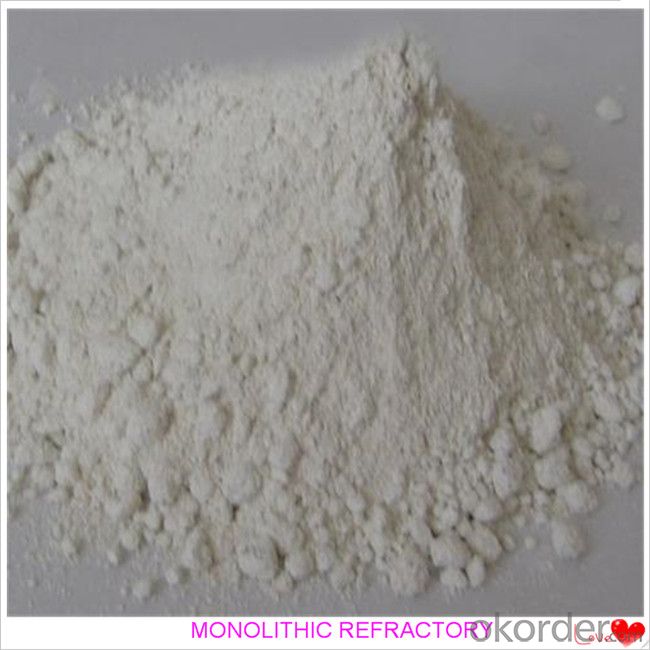
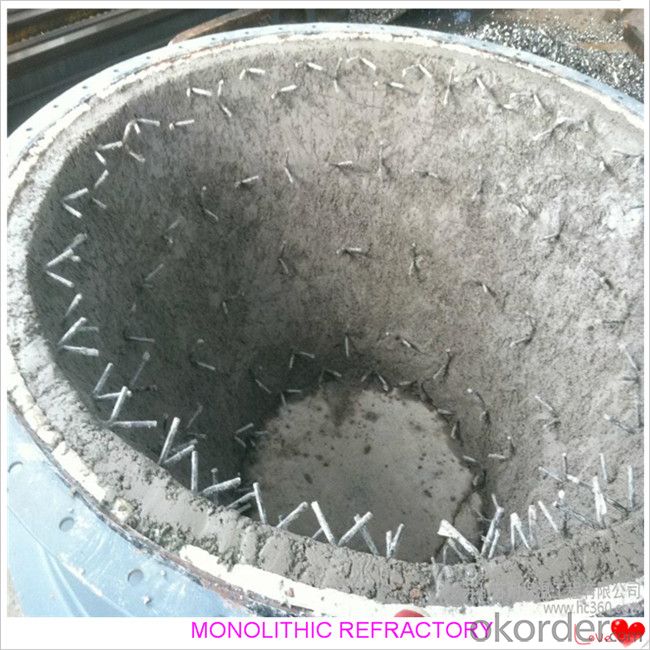
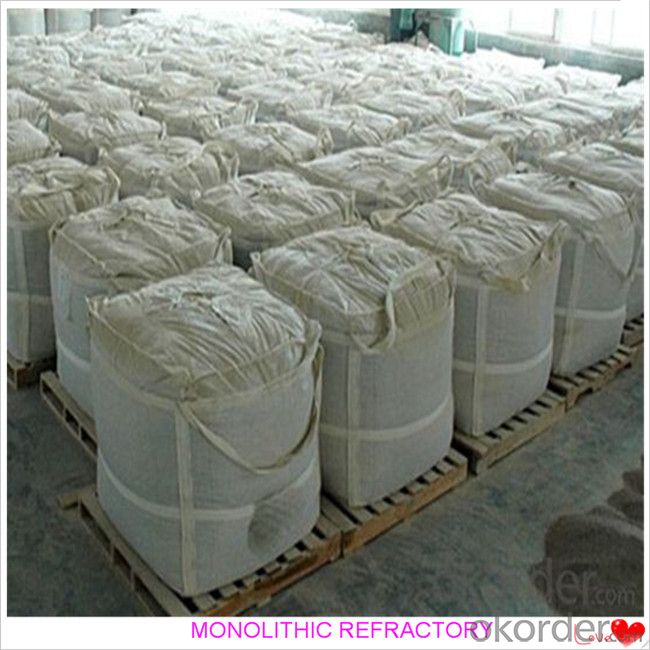
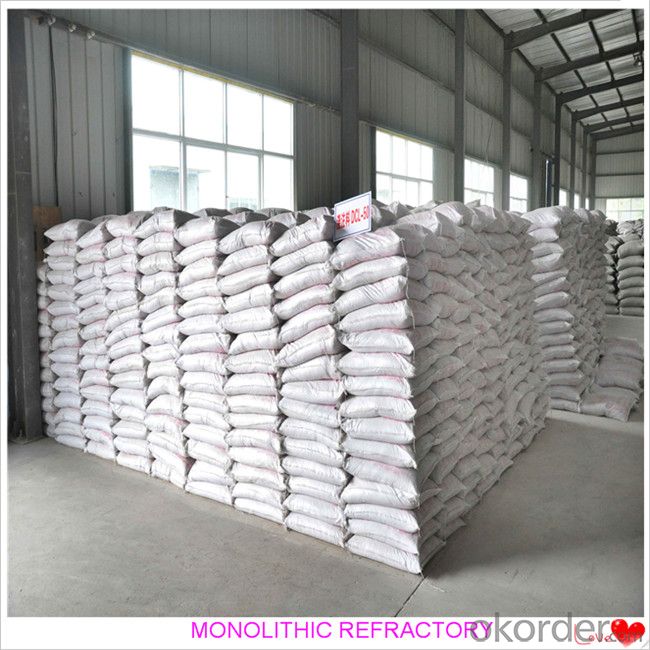
- Q: How are monolithic refractories applied in the hot face and cold face of furnace linings?
- Monolithic refractories are commonly used in furnace linings because of their superior thermal and mechanical properties. These materials are applied in both the hot face and cold face of furnace linings, but the application process differs for each. In the hot face of furnace linings, monolithic refractories are applied to withstand the extreme temperatures and harsh conditions. This is the area that directly faces the heat source and is exposed to the highest temperatures. Here, the refractory material is specifically designed to have excellent thermal conductivity and high resistance to thermal shock. To apply monolithic refractories in the hot face, a technique called gunning is commonly used. Gunning involves spraying or troweling the refractory material onto the surface of the lining. This technique allows for quick and efficient application, ensuring a uniform and dense layer of refractory material. Gunning is particularly suitable for areas with complex shapes and contours. On the other hand, in the cold face of furnace linings, the primary concern is insulation and protection. The cold face is the area that is not in direct contact with the heat source and experiences lower temperatures. Here, the refractory material is designed to have low thermal conductivity and high insulation properties. The application of monolithic refractories in the cold face is typically done using a technique called ramming. Ramming involves compacting the refractory material into place using a pneumatic or hydraulic ramming tool. This technique ensures a dense and solid layer of refractory material, providing excellent insulation and protection against heat loss. Overall, monolithic refractories play a crucial role in furnace linings, as they provide the necessary thermal insulation and mechanical strength required in high-temperature environments. The application techniques of gunning and ramming allow for efficient and effective installation in both the hot face and cold face of furnace linings.
- Q: How are monolithic refractories different from traditional brick refractories?
- Monolithic refractories differ from traditional brick refractories in several ways. Firstly, monolithic refractories are made from a single, homogeneous material, while traditional brick refractories are made from individual bricks that are assembled together. This difference in construction allows monolithic refractories to have a more uniform and consistent structure, which can enhance their performance and durability. Secondly, monolithic refractories are typically easier to install compared to traditional brick refractories. Since they are made from a single material, they can be poured or sprayed into place, eliminating the need for precise bricklaying and mortar application. This ease of installation saves time and labor during construction or repair projects. Additionally, monolithic refractories often have superior thermal shock resistance compared to traditional brick refractories. The homogeneous structure of monolithic refractories allows them to expand and contract more uniformly under thermal stress, reducing the risk of cracking and failure. This makes monolithic refractories more suitable for applications where rapid temperature changes occur, such as in furnaces or kilns. Furthermore, monolithic refractories can offer better resistance to chemical attacks and erosion. Traditional brick refractories may have joints and gaps between bricks, which can become vulnerable to chemical reactions or erosion over time. Monolithic refractories, on the other hand, have a seamless structure that minimizes the risk of chemical penetration and erosion, enhancing their longevity and performance. Overall, monolithic refractories offer advantages in terms of uniformity, ease of installation, thermal shock resistance, and chemical resistance compared to traditional brick refractories. These differences make monolithic refractories a preferred choice for many industrial applications where high temperatures and harsh environments are present.
- Q: What are the typical operating temperatures for monolithic refractories?
- The typical operating temperatures for monolithic refractories range from 1,100 to 1,800 degrees Celsius (2,012 to 3,272 degrees Fahrenheit), depending on the specific type and composition of the refractory material.
- Q: Can monolithic refractories be used in electric arc furnaces and induction furnaces?
- Yes, monolithic refractories can be used in both electric arc furnaces and induction furnaces. Monolithic refractories are versatile and can withstand the high temperatures and thermal shocks generated in these types of furnaces. They are often preferred due to their ease of installation, improved energy efficiency, and suitability for various furnace lining applications.
- Q: How do monolithic refractories improve the quality and consistency of iron and steel products?
- Monolithic refractories enhance the quality and consistency of iron and steel products by providing excellent resistance to high temperatures, thermal shock, and chemical attacks. These refractories form a seamless lining within the furnaces and other equipment used in the production process, ensuring optimal insulation and minimizing heat loss. This insulation helps in maintaining stable and controlled temperatures, preventing unwanted variations that can affect the final product's quality. Additionally, monolithic refractories' durability and resistance to wear and tear contribute to consistent and reliable performance, resulting in improved iron and steel product quality.
- Q: How do monolithic refractories contribute to the efficiency of iron and steel production?
- Monolithic refractories play a crucial role in improving the efficiency of iron and steel production by providing superior thermal insulation and resistance to high temperatures, resulting in reduced heat loss and improved energy efficiency. Additionally, these refractories offer excellent mechanical strength and chemical resistance, enabling them to withstand the harsh conditions within the production process, leading to increased durability and extended service life. Their ability to be easily shaped and installed also facilitates faster maintenance and repair, minimizing downtime and enhancing overall operational efficiency in the iron and steel industry.
- Q: What are some common maintenance practices for monolithic refractories in iron and steel furnaces?
- Some common maintenance practices for monolithic refractories in iron and steel furnaces include regular inspection and monitoring of the refractory lining for any signs of wear, damage, or erosion. This can be done through visual examinations, thermal imaging, or ultrasonic testing. Additionally, repairing and patching any damaged areas promptly is crucial to prevent further deterioration. Other practices include proper curing, preheating, and controlled cooling of the refractories to ensure their optimal performance and longevity. Regular cleaning to remove any slag, buildup, or debris is also important to reduce the risk of blockages or hotspots. Lastly, following manufacturer guidelines and recommendations for installation, usage, and maintenance is essential for effectively managing and prolonging the lifespan of monolithic refractories in iron and steel furnaces.
- Q: How do monolithic refractories contribute to the reduction of heat loss in ladles and tundishes?
- Monolithic refractories play a crucial role in reducing heat loss in ladles and tundishes. These refractories are designed to provide excellent thermal insulation properties, which help to minimize the transfer of heat from the molten metal to the surrounding environment. One of the key factors contributing to heat loss in ladles and tundishes is conduction, where heat is transferred through direct contact with the refractory lining. Monolithic refractories are specifically engineered to have low thermal conductivity, meaning they are efficient at reducing heat transfer through conduction. This helps to maintain the desired temperature of the molten metal for longer periods, ultimately reducing energy consumption and improving overall process efficiency. Furthermore, monolithic refractories also aid in reducing heat loss through radiation. These refractories have high emissivity, which means they emit a significant amount of thermal radiation. This emitted radiation helps to create a heat shield around the molten metal, preventing the loss of heat to the surroundings. By effectively trapping the radiant heat, monolithic refractories contribute to maintaining the desired temperature in ladles and tundishes, thereby minimizing heat loss. In addition to their thermal insulation properties, monolithic refractories also offer excellent resistance to thermal shock and mechanical stress, ensuring they remain intact and functional in the harsh operating conditions of ladles and tundishes. This durability further contributes to the reduction of heat loss by preventing any cracks or gaps in the refractory lining that could facilitate heat transfer. In summary, monolithic refractories significantly contribute to the reduction of heat loss in ladles and tundishes by minimizing heat transfer through conduction and radiation. Their thermal insulation properties, combined with their resistance to thermal shock and mechanical stress, help to maintain the desired temperature of the molten metal, improve energy efficiency, and enhance the overall performance of these metallurgical vessels.
- Q: How do monolithic refractories contribute to the overall efficiency of ladle cleaning operations?
- Monolithic refractories contribute to the overall efficiency of ladle cleaning operations by providing a durable and heat-resistant lining that can withstand high temperatures and chemical reactions. This lining helps to prevent the erosion and corrosion of the ladle, ensuring its longevity and reducing the need for frequent repairs or replacement. Additionally, monolithic refractories offer excellent thermal insulation, which helps to maintain the desired temperature of the ladle's contents and minimize heat loss. This ultimately improves the ladle's efficiency and reduces energy consumption during ladle cleaning operations.
- Q: What are the common applications of monolithic refractories in blast furnaces?
- Monolithic refractories are commonly used in blast furnaces for various applications such as lining and repairing the hearth, taphole, and slag line, as well as for hot repairs and maintenance. These refractories provide high-temperature resistance, erosion and corrosion resistance, and thermal shock resistance, thereby ensuring the efficient and reliable operation of blast furnaces in the iron and steel industry.
Send your message to us
Monolithic Refractories for Iron and Steel Industry - Insulating Castable for Fireside and Industrial Furnace
- Loading Port:
- China main port
- Payment Terms:
- TT OR LC
- Min Order Qty:
- 1000 kg
- Supply Capability:
- 3000000 kg/month
OKorder Service Pledge
OKorder Financial Service
Similar products
Hot products
Hot Searches
Related keywords
